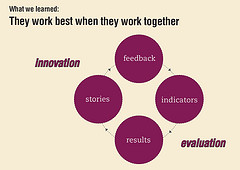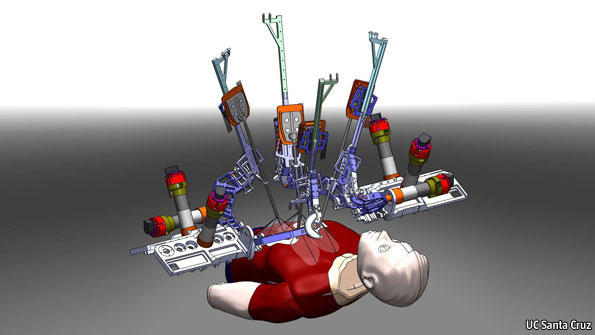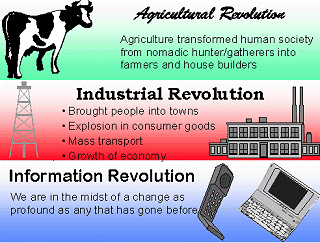Browse by Tag
- "Real" Innovation (2)
- Alignment (6)
- Business Innovation (9)
- Business Plan (2)
- Business Plans (1)
- Creativity (24)
- Critical Success Factors (4)
- Entrepreneurship (9)
- Global Competiveness (4)
- Human Side (11)
- India (1)
- Innovation (4)
- Innovation Consulting (18)
- Innovation Killers (3)
- Innovation Management (18)
- Innovation Tools (17)
- Innovation Training (24)
- Innovations (7)
- Inventions (16)
- IT Innovation (1)
- Leaders (5)
- Leadership (20)
- Leadership Development (13)
- Organizational Leadership (2)
- Organizational Strategy (20)
- Personal Values (6)
- Prediction (5)
- Strategic Innovation (38)
- strategic planning process (4)
- Strategy (3)
- Training (1)
- Vision (5)
- Weekly Dose (8)
Posts by Month
- 2014
- 2013
- 2012
- 2011
- 2010
- 2009
- 2008
- 2006
Building a Culture and Climate of Innovation - You Can Do It
Building a Culture and Climate of Innovation - You Can Do It
Read part two of Jatin Desai's interview with the Propelling Marketing Ideas blog. He focuses on Culture and Climate of Innovation. He answers the following questions
- How can a company build culture of innovation? (in other words, how can they foster innovation?)
- What does a company need to do to build strong leaders for innovation?
- How does a company teach innovation and coach others?
- How does a firm promote and build innovation teams, especially across silos?
- How do you make innovation a daily habit for everyone at all levels in a company?

Read the interview here.
Creating the Purple Thing that Makes Trillions
Consider the following:
- The other day in a LinkedIn discussion on creativity as a precursor to innovation, someone commented that every discussion on creativity seems to devolve into personal or pet theories on the subject.
- A recent email with some insights from the HR Management Institute's conference on "Enhancing HR as a Strategic and Transformative Business Partner in Times of Volatility and Change," admonished: "If you're not authentically engaged in the competition for talent already, there's little time to waste. Nearly three million employees voluntarily left their employer in January, the highest level since June, 2008." One conference speaker followed up with a blog on "The Top 5 signs You're already Losing the Talent War"
- FEI posits that if you attend FEI US, you will, "Walk away with the answers and motivation to lead your organization into the next 10 years." The top 3 bullet points:
- Creativity under pressure
- Finding your next trillion dollar opportunity
- Creating an environment that breeds innovation

What this means:
- There is agreement that creativity is integral to innovation but disagreement on what it is and how to keep it flowing.
- If top management has not yet removed the barriers within your organization that stifle the flow of creativity and innovation, has neglected to create a viable and sustainable culture and climate in alignment with your vision, and still needs parameters in place to find good people and sustain relationships, you are backpedaling on the back roads in the state of outdated paradigms.
- In this exponentially changing business climate, the pressure to get ahead is weighing many organizations down, while the pressure to be sustainably edgy but relevant in finding the next innovative wave puts HR, R & D, and top management in far too many meetings. How innovative is your oganization?
Getting back to creativity as the agreed upon source of innovation, would it be beneficial to take a look beyond the structure, policies, vision and existence of the organization itself? Do culture and climate for innovation support have a tough road due not only to entrenched outdated evaluation, training, and leadership models, but perhaps also factors deeper in the societal fabric?

Why is creativity elusive and the creative process so hard to define? Consider this real life scenario.
The Artist. Eschewed a guaranteed-in to Harvard Medical School in the 1960's, left Duke University behind in 3 rd year to earn a degree in American Economic History attending night school at Long Island University; then thanking them for the offer to teach, became a graphic artist to earn a living after welding sculpture after-hours at an industrial job and using old tempura to create a first painting at 26. Has donated his time over the years helping kids find art expression with drawing and sculpting with found objects. His family was stunned by his decisions. He became an artist full time at 50. When asked the question, "What do you think is the biggest obstacle to encouraging creativity?" he replied: " Hardened arteries. Society, education, and business put rules and clamps on intuitive processes. Most art education is not art, is not creative, and at worst is manipulative. The regimentation seen in business begins in the schools. Artists do survive in spite of the schools and industrial environment, but not without emotional and psychological cost. We reward manipulation, not creativity."
All of us innately have a degree of creativity regardless of how or why, and the act of creating fulfills something in us that nothing else can. The real question may be why do we seemingly lose the ability to access it, or are reluctant to acknowledge and use it? Most likely the answer is lack of opportunity, practice and support. We're much too busy actively doing things society/business tells us we should do to be a success in life. As a result, not only do we personally not have time for creative pursuits or feel guilty when we do take the time, but for most of us our jobs and careers do not reward activity that is outside of the accepted norm, and daydreaming is a big no-no, as there is not an accepted cost center code for that activity. As a result, when we are asked to be creative or desire to be, we need to relearn and remember what it is.
How do you find Innovation: 11 Practical Ideas by Jatin Desai
Start Fooling Around - A Business Guide to Innovation
How are Innovation, Creativity, Engagement, Personal and Human Values linked?
Two quotes to enjoy:
"Imagination is more important than knowledge. I never came upon my discoveries through the process of rational thinking." ~ Albert Einstein
"When I was 5 years old, my mother always told me that happiness was the key to life. When I went to school, they asked me what I wanted to be when I grew up. I wrote down 'happy'. They told me I didn't understand the assignment, and I told them they didn't understand life." ~ John Lennon
Example of Innovation using Crowdsourcing in Biology
Cathal Garvey’s home laboratory in Cork, Ireland, is filled with makeshift equipment. His incubator for bacteria is an old Styrofoam shipping box with a heating mat and thermometer that he has modified into a thermostat. He uses a pressure cooker to sterilize instead of an autoclave. Some instruments are fashioned from coffee cans.
One of the movement’s rallying points is Genspace, a nonprofit laboratory in Brooklyn that is open to members of the public, regardless of scientific background. Since it opened in 2010, on the seventh floor of an old bank building, similar labs have sprouted in Boston and San Francisco.

Genspace has roughly a dozen members, and each pays $100 a month to cover rent and what laboratory people call consumables: chemical agents, disposable tubes and other paraphernalia that need to be replaced regularly.
Source: New York Times
Medical Robots are coming
RAVENS have a bad reputation. Medieval monks, who liked to give names to everything (even things that did not need them), came up with “an unkindness” as the collective noun for these corvids. Blake Hannaford and his colleagues at the University of Washington, in Seattle, however, hope to change the impression engendered by the word. They are about to release a flock of medical robots with wing-like arms, called Ravens, in the hope of stimulating innovation in the nascent field of robotic surgery.

Robot-assisted surgery today is dominated by the da Vinci Surgical System, a device that scales down a surgeon’s hand movements in order to allow him to perform operations using tiny incisions. That leads to less tissue damage, and thus a quicker recovery for patients. Thousands of da Vincis have been made, and they are reckoned to be used in over 200,000 operations a year around the world, most commonly hysterectomies and prostate removals.
Source: The Economist
How are Innovation, Creativity, Engagement, Personal and Human Values linked?
1) Innovation arises from creativity.
2) Creativity is shaped by individual's engagement.
3) Engagement and commitment to one's work is directly linked to clarity of Personal Values and the Organizational Values of an institution one works for.
Personal Values are molded based on one's Spiritual Integrity (alignment of thoughts, words, and actions). Spiritual Integrity is the expression of one's deep self-awareness of their inherent Human Values within. Human Values are the same in all human beings. One's ability to unearth the Human Values distinguishes one's moral compass vs. that of another - sometime called Character.

Therefore, if an organization wants to create a climate and culture innovation, best possible lasting solution is to help every employee and leader become more self-aware of who they are and what their personal values are. And I don't mean definition of personal values but the expression of those values; i.e. how do those values show up in their work? Their projects? Their email communications, etc.? This will allow everyone to 'tap into' the inner source where ideas to grow the business are sitting dormant.
Great Innovation Leaders figured this out long time ago - i.e. innovation arises from one's (or team's)deep passion for something much bigger then themselves.
-Jatin
Role of Innovation for Individuals and Organizations- Part 2
Welcome to Part 2 of the Q&A series on Innovation for Individuals and Organizations! Below are next three questions (and answers!) on Innovation by Jatin DeSai, CEO of the DeSai Group. Feel free to ask and discuss any thoughts, comments or questions you may have...
Q2: What are some myths associated with innovation?
Answer: Among the myths about innovation is that most people think of innovation as an invention or breakthrough products like the iPhone, hybrid cars, green computers, GPS in cars, etc. Another myth is the belief that innovation is only for large companies.Other myths associated with innovation include the idea that innovation is too risky, eccentric, and time consuming to achieve. Some think innovation is only for R&D areas or for high-tech companies and consumer product industries only. Some believe that innovation is too costly and it takes too long to identify areas in need of innovation and implement solutions. All of these ideas and many more are all unfounded. Every organization, for profit or not for profit, large or small, in every function and at every level can greatly benefit from innovation. The key is to understand it, define it for their respective business, and point all innovation efforts towards one of three value-generation business outcomes - to grow revenue, to grow profits, or to grow market reputation.
Click here to read the book 'The Myths of Innovation' by the well renowned author Scott Berkun.
Q3: You say innovation is a critical driver of growth. Isn't all growth done by innovation or do you mean folks stick to tried and true methods for growth?
Answer: Most businesses are designed to make profits alone. In our, more than 25 years of experience, senior executives seem to pay more attention to the bottom line(profits) and ROI metrics then to top-line growth. Top-line (sales/revenue) growth is much harder to achieve then the bottom line. Most incentives and compensation plans are primarily tied to the bottom line and stock value. I believe this is the primary cause of much of our financial system failure. Motivation to grow the top-line with innovation rarely exists in the business ecology. Innovation, by definition, requires allocation for ‘mindful failure' (planned projects for purpose of trial, error, and learning), experimentation, and courage to withstand financial performance pressures. When there is no incentive to grow by innovation, only those real leaders with highest moral integrity are willing to do it. Here lies the irony of our current economical situation.
Click here to read how the world's largest technlogy company HP is riding the recession wave using Innovation.
Q4: How can innovation help discover what your customers (internal and external) really want?
Answer: Innovation has very specific management processes. It can be organized and managed similar to every other organizational capability. At our firm, we have created training programs, courses, tools, and methods to teach our clients how to be more creative and strategic for future growth. One of our tools is designed to discover everyone's own "Innovation StyleTM"; i.e. what stimulates creative thinking and how people approach problem solving (click here for more). By understanding this ‘human side' of innovation, it is absolutely possible to identify a client's deeper intent (beyond the needs). Once everyone learns how to bring out the best 360º thinking in themselves and from others, the organization can achieve extraordinary success and generate maximum value with assets they already have. This sounds simple, but learning to ask questions tailored to an individual's style is a much more complex. However, once individuals and management in organizations learn the skill of asking the right questions, they will become more successful in determining what customers ‘really' want and need.
Thanks,
Jatin
Role of Innovation for Individuals and Organizations- Part 1
Jatin DeSai, CEO of the DeSai Group recently answered 5 thought-provoking questions on the role of innovation for individuals and organizations. The answers to these questions will stimulate your understanding of Innovation and its positive impact on you personally and professionally.
The first question and answer is posted below.The remaining four Q & A's will be posted over the week...
Q&A on Role of Innovation for Individuals and Organizations
By: Mr. Jatin DeSai, CEO, The DeSai Group
“Innovation Execution” Consulting Firm
Q1: What is the game of innovation? Is innovation a game?
Answer: "Yes, innovation is a game. It is a game because it requires knowledge and skills to compete and win in the ever changing markets. Innovation is a game that every business today needs to play today to avoid becoming useless or even extinct.
Also part of the game of innovation is global competition, the energy crises, economic system failure, poverty, population expansion, and many other mega trends that are here to stay. All of these are converging upon every business sector simultaneously. They are like huge rivers all merging in to one. The turbulence, the waves, and the force created by these mega trends have never been seen by humanity before.
That is why running a business the ‘same old way’ will only guarantee that its management will end up on a commodity island – where everything is price competitive and customers don’t see much difference between that business and the competition. From my perspective as an innovation consultant, I believe that every business must figure out a way to meet every challenge directly or indirectly, with a focus on winning the game of innovation. This means, businesses must learn to experiment, fail, learn from failure, and try something else – until they develop new business acumen skills to sustain and grow.

The rules of the innovation game have also changed - primarily due to two “major” forces: the information revolution and globalization. There is plenty of evidence that shows how these two major trends are shifting consumer buying patterns, local and regional economies, access to education, environmental issues, and the pace of life for every human being. This has created more urgent need to invent new ways of doing business – faster then ever before. Average life span of a company is shortening and more businesses are failing faster due to these two major trends.
Innovation comes from the act of being creative. Creativity comes from people. So, to play this game correctly and compete in this new age, CEO’s must find a way to tap in to the hearts and minds of employees, customers, suppliers, and partners. Our latest research shows that the most critical new competencies that must be developed and managed in your company culture will be: discovery, creativity, influence, implementation, and mindful action. These skills cannot be outsourced and will play more a important role when creating and keeping customers for life."
Feel free to comment and express your thoughts on this blog..
Thanks,
Jatin DeSai
What is Innovation?
In our findings for the last 25 years in business, we have discovered that innovation, at a personal level, is as different as the definition of spirituality. It can be very personal for people. Within organizations, our play arena, most of our customers have no idea about what innovation is, and most cannot agree on a definition.
For me, Creativity is generating original, novel ideas. Innovation is putting those ideas to work and getting results.
There is significant difference between creativity, invention, and innovation. Creativity arises from deep personal beliefs. Beliefs are shaped by one's character and values. We use creativity, rooted in our beliefs, assumptions, and passions, to find meaning in our work. When an organized group, with the same passion and beliefs work together for something much larger than themselves, they are capable of generating ideas that can be ventured for commercialization and help grow the top-line or impact the bottom-line of the group/business - that is Innovation. The actual product or service brought to a market, that makes a difference in the marketplace or in people's life, is Invention.

Therefore, Innovation is all about "Harvesting the deep insights of an organization's human spirit and knowledge, generating a pipeline of ideas that can be evaluated, selected, and ventured using disciplined tools, methods and processes that advances growth objectives for an organization."
Finally, for a business to succeed and thrive, a business cannot accidentally or occasionally be innovative. It must innovate at a rate faster than current (or future) competitors - with a high degree of predictability. So, in that sense, innovation must be positioned as a strategic tool to improve organizational agility to stay alive and grow. There are only 3 companies still in business on the DOW list from 70's - and soon maybe even less.
For organizations, Innovation is no longer a choice - it should be the primary goal.
Here are some latest articles on Innovation:
- Click here to read the article 'Innovation in America- A gathering storm' from Economist.com
- Click here to read what Google's CEO Eric Schmidt has to say about Innovation.
Thanks,
- Jatin
P.S. If you want to download our latest paper on innovation, feel free to go to http://www.desai.com/Resources and download the whitepaper on "Strategy-Driven Innovation". Enjoy.
The answer is LOVE!
Recently, I was asked: "What is the chief quality that we have lost as human beings today? What qualities do we NOT have in abundance right now, that we truly, desperately NEED right now to excel as a species?
It was asked because the person was very concerned about employees, their engagement, and their growing stress levels.
The history of ‘work places' for the past 100+ years has plenty of examples of a disengaged workforce. So, this feeling of uncertainty and fear, is not new. The intensity at which this has happened is alarming.
In my observation, the only ‘chief quality' we are deprived of, and is the ONLY thing humanity lacks - is the poverty of Love.

To Love, without attachments, To Love, others without selfish motives, To Love with care, To Love others as our own brothers and sisters , To Love the divine spark in all living things - especially human beings, irrespective of their past actions, language, color, or faith.
This will occur someday. How? In my strong belief, it has to. We as humans are a form of Love. It is our nature to Love and be Loved. Once each one of us realize who we truly are and discover our inherent divinity as Love, we WILL change ourselves and therefore the world will be changed - one person at a time.
Another way to look at this is to accept that nothing is lacking. Everything is perfect. What we have is what needs to be had - for each one of us. It is what we need right now to help us evolve our own consciousness. We have what we deserve. What we have, good or bad, is result of what we did in the past - the law of Karma. Some of us are only evolved to chase money and materialistic comforts. Some of us are ready to challenge every system around us to make it better, some of us are ‘designed' to win and beat the competition, some of us can only ‘see' the wrong in the world and nothing good. Through all such experiences, each one of us will have to learn the ultimate lesson (someday) that the external world (vs. the inner world), has nothing permanent to offer to us - to make us happy or find peace and bliss. We will have to, someday, accept that such virtues only lie in the depth of our very own heart and soul - not outside in the physical world. That might take a few lifetimes,if not few hundred life times for some of us.
After such a long journey, someday, each one of us will arrive to the conclusion that nothing is lacking, and everything is perfect - for each person, each society, each government, and each world. For each, what they have now, is what is needed for them to evolve to the next stage in their consciousness towards permanent peace - enlightenment, heaven, Moksha, etc.
For more information on this wonderful virture:
- Click here for the health benefits of Love
- Click here for reading about how loving your employees makes good business sense
Recommended books:
- The Six Secrets of Change which includes 'Loving your employees' as a key secret for success.
- Leadership and the Force of Love - Six keys to Motivating with Love
Best wishes,
-Jatin
Role of Personal Vision in Innovation
Many world-class companies cannot survive without a great vision. Especially in the current climate, how can an organization survive without a well-defined vision? I don’t mean vision-statement alone, I mean a real vision – a vivid enough picture of the future that has no boundaries, it is larger then the organization itself, it is far enough in distance to want to work hard for. A great company vision, everyone can see a clear direction, not the exact path, but a focused path to the future.
Good organizations have a vision; Great organizations are living their vision. Any strategy guru will tell you, without a company vision, the company will fail.
Therefore, if company must have a good vision to be successful, why don’t every individuals have a vision? Do you? Do you have it written for your self?
I don’t think it is possible to be ‘tuned-in’ to our work without having our personal vision connected to our work. Is it? Without this connection, doesn’t it just feel like ‘work’?
Who loves to go to ‘work’ everyday? Not too many. Work can become our own worship only if is fun and exciting. How can we be creative in our work if we don’t have a vivid picture of our own future?
For innovation to work, I have already argued that employees must be fully engaged – more often, everyday, in every project they contributing to. ‘Engaged’ being - more creative in their work, more passionate, more meaningful, less stressful, collaborative etc.
Most people I know haven't thought to do a personal vision statement for themselves. The great athletes, as we watched Olympics in Beijing recently, all spoke about how they got there, how they envisioned their accomplishments, how they visualized their success, how they even ‘watched’ the medal ceremony and their dreams coming true years ago.
Aristotle observed that "the soul never thinks without a picture."
Creating a compelling vision for our lives -- one that includes not just a vision of our professional accomplishments but also a vision for family life, education, health, community engagements, travel, and adventures -- can point us in new directions and provide the drive we need to get there. A personal vision statement asks: what do I want to be, do, and contribute in life -- and who do I want to share it with?
Many people struggle with the concept of defining a vision of the good life because it sounds too abstract and distant. Fortunately, authors Richard Leider and David Shapiro have come to the rescue with an elegantly simple definition of the good life: "living in the place you belong, with the people you love, doing the right work -- on purpose."
It is important to realize that a vision is very different from purpose ("mission") and goals. Our purpose is our reason for being, and we should think of it as timeless. Our goals are the targets we want to accomplish, and they are best conceived in near term; usually within 1-3 years. By contrast, our life vision is a vivid description of what we will do with our lives. It’s best thought of over a decade, or even a lifetime. Our life vision should give goose-bumps, make us cry, and take our breath away with its boldness. It should roar with passion and set markers for what we plan to do with our days on the planet.
A personal vision for yourself, may take long time to arise in your consciousness. But, once you have it, it will become your ‘being’, the creative and catalyzing force in your life.
Carl Jung says that "Your vision will become clear only when you look into your heart. Who looks outside, dreams. Who looks inside, awakens." In essence, our vision statement is an authentic expression of how our purpose and values play out in the world.
C-Suite Bottom Line: To drive enterprise innovation, and create a remarkable living organization, one of the easiest action you take, is to help every employee craft their personal vision statement. This will allow every employee to put their dreams on the line of their own vision of the good life. Once they can see the line of sight between their purpose, values, and work, then let them go – see what happens to your culture for innovation. Creativity will overflow, ideas will come from everywhere, continuous innovation will become the food for sustainable growth, and therefore business strategies will become reality – faster.
-Jatin

